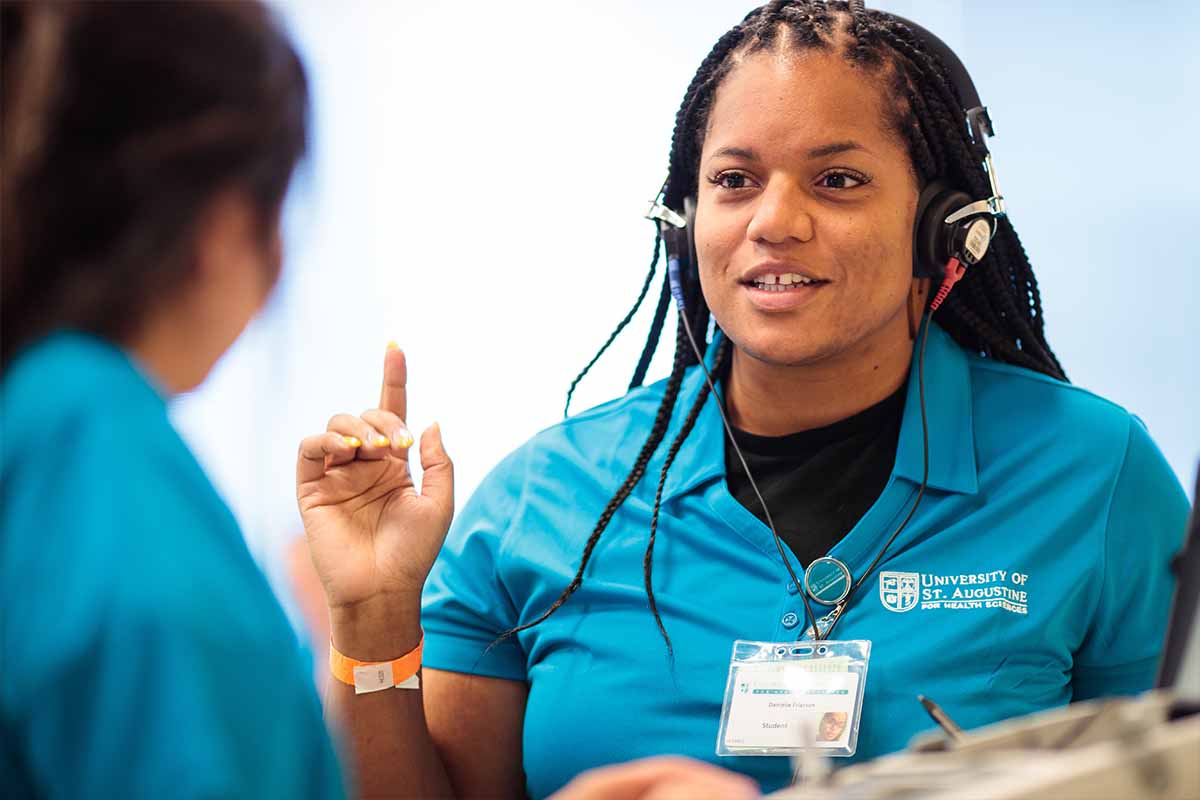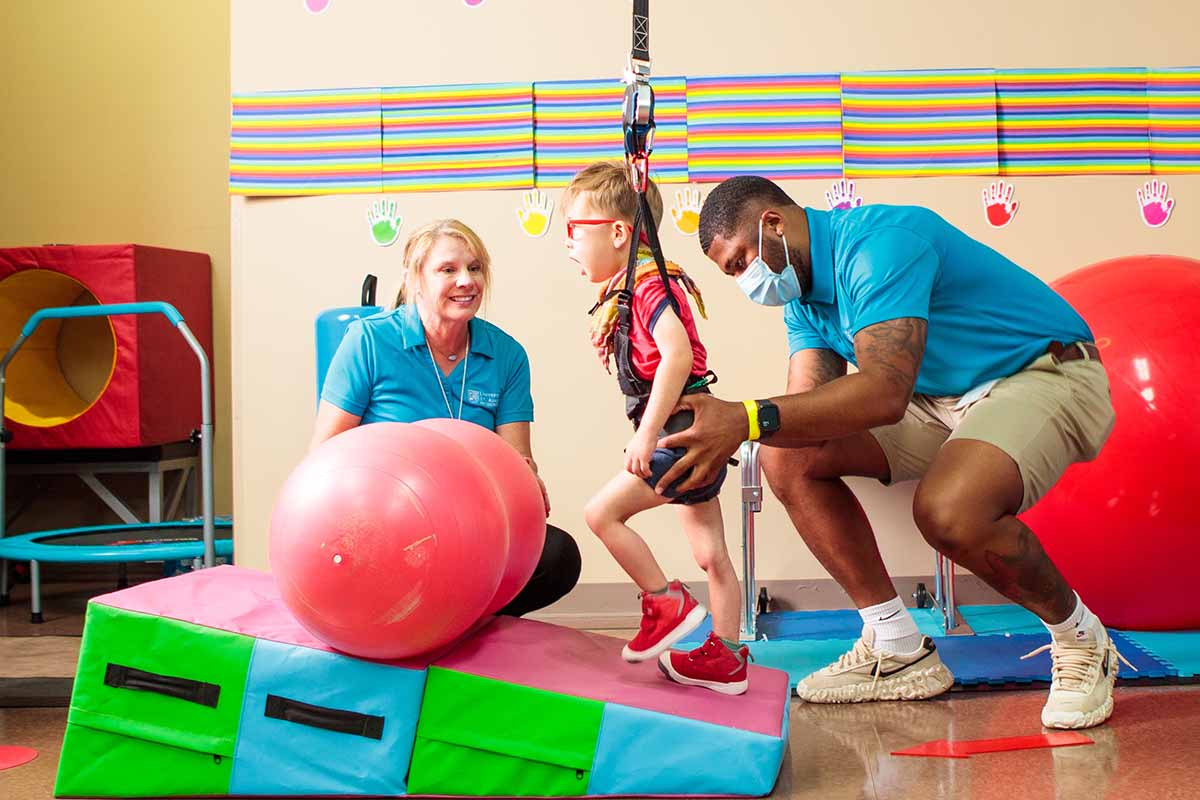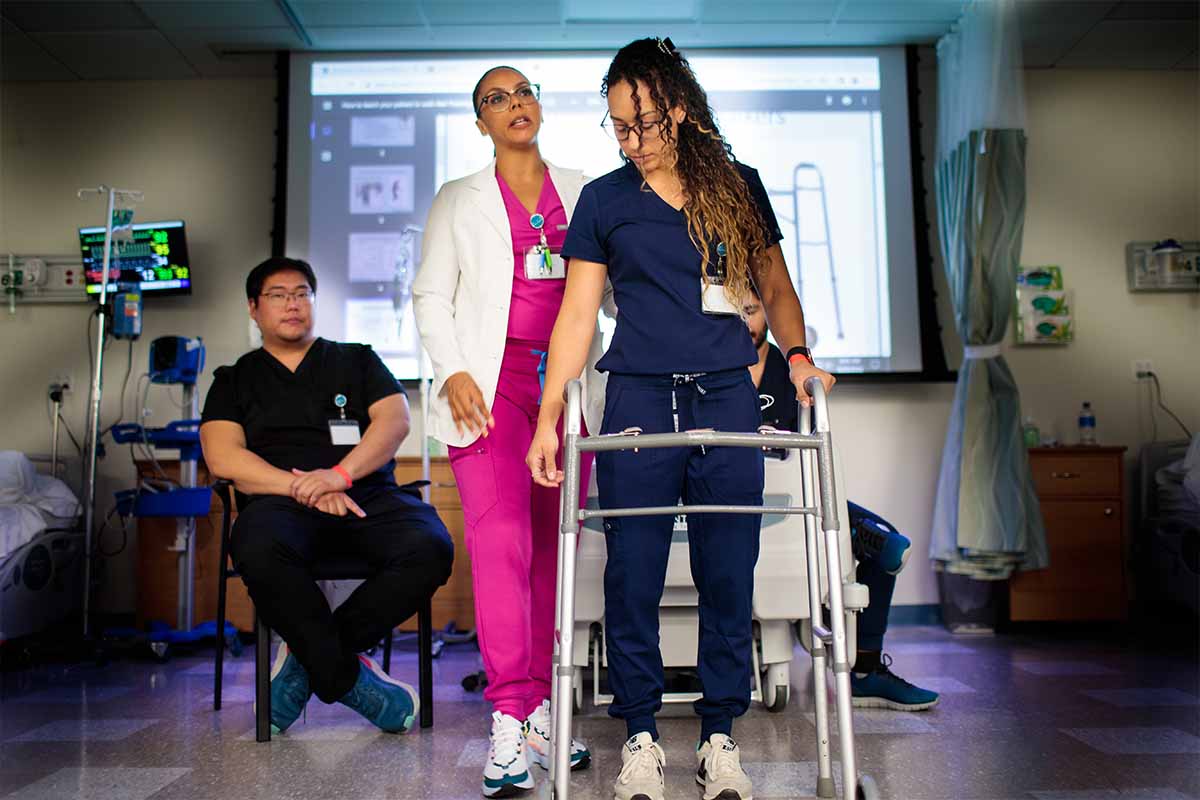
As we celebrate Nurses Month, we at USAHS wanted to get a sense of what a typical workday is like for a nurse manager. We asked alum Ahnnya Slaughter, DNP, to tell us all about a day in her life. Dr. Slaughter graduated in 2021 from USAHS’ Doctor of Nursing Practice program, the Nurse Executive role specialty.
Coming from a military family, she began working at a VA hospital in the Los Angeles area 30 years ago as a critical care RN. “Veterans deserve the best care,” she says. “My calling wasn’t to be in the military. This is my way of being able to serve the country.”


Ahnnya Slaughter, DNP ’21
Over the years, she worked her way up, through positions such as informatics specialist, deputy nurse executive, and director of clinical staff development. She began earning her doctorate at USAHS in 2019. Today, Dr. Slaughter is a High Reliability Officer within the VA Long Beach Healthcare System. “I wanted to be part of improving services for veterans—and now, that’s exactly what I’m doing in my job. I love what I do—this job in particular. It makes a difference for patients and staff.”
In this role, she oversees the medical center’s journey to high reliability. According to the Agency for Healthcare Research and Quality, a high-reliability organization (HRO) is one that “operates in complex, high-hazard domains for extended periods without serious accidents or catastrophic failures … by relentlessly prioritizing safety over other performance pressures.”
“It’s about a leadership commitment to zero harm, a culture of safety, and continuous process improvement,” Dr. Slaughter explains. “Everything is a process,” including the way her day unfolds.
A Quality Day
5 a.m. Her alarm goes off. She drinks coffee while getting ready for work. She listens to light-hearted talk radio during her 20-minute commute.
6:20 a.m. Dr. Slaughter takes a morning walk on a portion of the 100-acre land where the facility sits. Her favorite section is the Veterans Garden, with its flowers, plants, birds, rabbits, and ducks.
7 a.m. She arrives at work and prepares for her daily series of tiered huddles with members of her teams. These huddles (whether in-person or virtual) follow lean methodology, which is about minimizing waste and improving outcomes. The huddles are honed for efficiency. “Instead of sitting in a two-hour meeting once a week and discussing the same things over and over, we’re constantly communicating up and down the chain and taking action where we need to,” says Dr. Slaughter. “Triage is critical to the mission. When issues arise, we set aside time later for problem solving.”
7:30 a.m. Daily Management System huddle. Dr. Slaughter’s first huddle is with her direct reports, who include process improvement nurses, systems redesign specialists, and admin support. They go through a color-coded series of checks on safety, teams, equipment, processes, and supplies (STEPS). If anything is “red,” for example relating to team operations or staff shortage issues, they try to form a “quick hit” solution. Larger issues are tracked. They also cover several other topics—all in 15 minutes!
7:45 a.m. Project Board huddle. The same group of people enter a huddle to report on projects.
“My team members and I are basically internal consultants,” says Dr. Slaughter. “We coach everyone from frontline staff to executive leadership. We get requests to come in to deal with patient safety and other issues, on both the inpatient and outpatient side. We’re available for departments that need help. It’s like whack-a-mole.”
8 a.m. The Clinical Daily Dashboard huddle is attended by nurse managers, care managers, and the deputy nurse executive. The team discusses the flow and operations for the day. “You can’t have a culture of safety if people are afraid to speak up,” says Dr. Slaughter. “The frontline staff need to have a voice. So I coach the nurse managers to address their direct reports in a way that empowers them to problem solve. And I listen for how they are resolving issues.” High reliability is a cultural transformation that starts with education, creating awareness about the reason why changes are needed.
She continues, “The term ‘high reliability’ comes from the aviation and nuclear fields. Medical errors are also on that scale. How do we reduce the potential for them? As long as humans are involved, there will be drift. People who perform the same procedure each day might forget how dangerous it is. Like blood transfusions. They are very complex, and a lot can go wrong. We have to make sure the right protocol is in place and that providers are following it.”
8:45 a.m. Next is her supervisor’s huddle, in which she meets with all those who also report to the Chief of Quality. There, she brings any issues she needs to escalate to a higher level. Her supervisor then goes on to the director’s huddle.
She says that the organization’s goal is to minimize “craftsman mentality”—one person who has specialized knowledge that no one else has.
“A one-man process isn’t a process, it’s a prayer.”
9:30 a.m. Finally, there’s the enterprise operations huddle; the chiefs and department leaders are expected to participate in this huddle every day, and it’s open to all staff.
10 a.m. Training. The Quality team conducts training, such as educating chiefs on what a high-reliability organization is. Or they might conduct training on how to create a high-functioning team.
11 a.m. Systems Redesign and High Reliability Organization team meeting. The team might convene about current issues, such as how to reduce readmission rates for people with alcohol use disorder.
During the pandemic, the Systems Redesign team had to create several new processes from scratch, Dr. Slaughter says. They created a process around reusing PPE, such as masks and gowns—but luckily, they never had to implement it. They created a process around lab turnaround time for COVID-19 tests, prioritizing which tests were most urgent. They also organized the workflow for conducting COVID screenings of everyone who came through the door, with screening stations set up according to a uniform layout of equipment, signage, and directions for staff.
This team also played a major role in the COVID vaccine rollout at the hospital. Keeping in mind a tenet of lean methodology, “waiting is waste,” they didn’t want to ever have a patient line for the vaccine. “We used simulation, with staff playing the roles of patients moving through a tent outside. We timed it so we weren’t overstaffing or understaffing.” They also had scalable staffing depending on the number of appointments per day. They discovered that veterans would often arrive well before their appointment time, so the vaccine service would be jammed in the morning and dead in the afternoon. “The team did a gemba walk and talked to patients.” (Gemba is a lean process that asks unbiased observers to ask questions about what is happening around them.) “They found out that the veterans came early so they could beat traffic or get the appointment over with. So we started staffing differently in the morning versus the afternoon.”


Tibor Rubin VA Medical Center
12 p.m. Food. Dr. Slaughter doesn’t usually have time to take a lunch break, so she grabs food on the run, while catching up on emails, or while strategizing a response to a consultation request.
1 p.m. Team events. Her team might host an event such as a safety forum about how to engage staff in practicing safety protocols. For example, one recent interactive session focused on how not to talk to people with mental health disorders.
2 p.m. 1:1 check-ins. Dr. Slaughter may also have 1:1 check-in sessions with her staff members; these regular meetings ensure there is protected time to address each team member’s concerns.
3 p.m. HeRO award. The HRO team gives HeRO awards to staff members who are seen practicing a high reliability principle or enhancing a process.
4 or 4:30 p.m. Dr. Slaughter leaves work and commutes home.
5 p.m. After work, Dr. Slaughter switches roles to mom and may be chauffering her teens to various practices, prepping dinner, or playing with her two four-legged kids. Some days, she may conduct a home visit for a per diem job for a different organization. “I love keeping my hands in providing direct patient care, so I try to do some kind of side job that allows me to do that.”
8 p.m. When time allows, Dr. Slaughter relaxes with a TV show, such as Ted Lasso or America’s Funniest Home Videos.
On the weekends, she enjoys taking Zumba or dance classes and attending church. She also might work on the syllabus for the course in nursing leadership that she will teach as an adjunct professor at Vanguard University in Costa Mesa, starting in the Summer term.
Earning Her DNP at USAHS
When asked how it was to earn her doctoral degree in nursing while working in a demanding job, Dr. Slaughter says, “It almost helped to study and work at the same time.” Her practicum project was about helping to impact patient care at her organization by increasing patient compliance with fecal immunochemical test (FIT) screening for colon cancer. Only two out of 10 kits distributed to patients were coming back. She helped to implement a multi-pronged approach: providers, standard language for nurses to educate patients, raise the visibility of the test. Compliance went up, correlated to patient education.
“The Global Health class opened my eyes and awareness about global health and disparities in healthcare. I didn’t realize how adverse childhood experiences are a predictor of illness. Why are we not intervening sooner?”
With this knowledge, she started volunteering with an organization that helps to prevent human trafficking.
She also set up a collaboration between the VA and her church, which is one of the largest African-American churches in Southern California. The church became a COVID-19 vaccine site. To educate community members on the vaccine’s technology and importance, she organized a webcast and invited some of her colleagues to be guests.
She enrolled in the DNP because a couple of her coworkers had enrolled and told her about it. “It was a new program, and they were offering a good discount,” she says. “Earning my DNP was always my goal, but I was putting it off because I had teenagers at home. But this program was the right fit. I did it for my own professional development.”
The University of St. Augustine for Health Sciences (USAHS) offers a Master of Science in Nursing (MSN) program, a Doctor of Nursing Practice (DNP) program and Post-Graduate Nursing Certificates designed for working nurses. Our nursing degrees are offered online, with hands-on elements depending on the program and role specialty. The MSN has several options to accelerate your time to degree completion. Earn your advanced nursing degree while keeping your work and life in balance.








